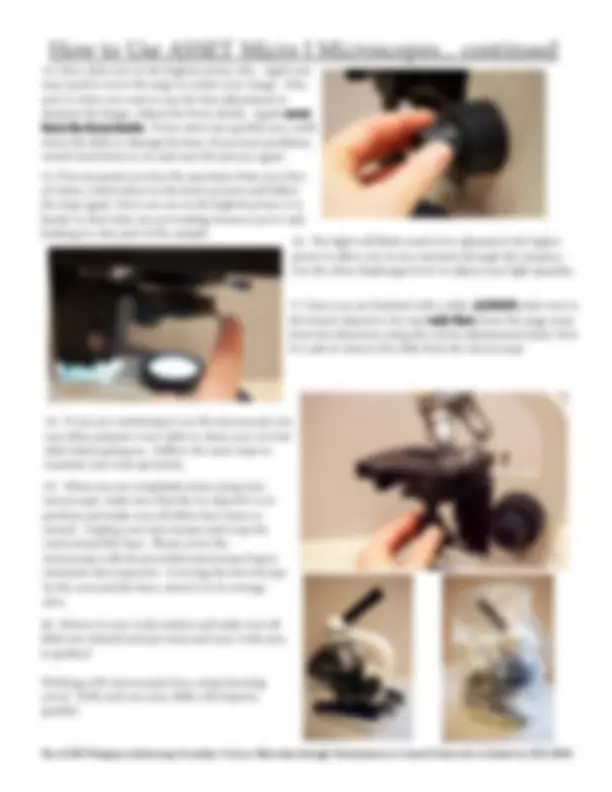




Study with the several resources on Docsity

Earn points by helping other students or get them with a premium plan


Prepare for your exams
Study with the several resources on Docsity

Earn points to download
Earn points by helping other students or get them with a premium plan
Community
Ask the community for help and clear up your study doubts
Discover the best universities in your country according to Docsity users
Free resources
Download our free guides on studying techniques, anxiety management strategies, and thesis advice from Docsity tutors
A step-by-step guide on how to use an asset microscope, including preparing the specimen, adjusting the focus and light, and handling the microscope safely. It also mentions the asset program at cornell university funded by nih sepa.
What you will learn
Typology: Study notes
1 / 4

This page cannot be seen from the preview
Don't miss anything!



How to Use ASSET Micro I Microscopes
How to Use ASSET Micro I Microscopes... continued